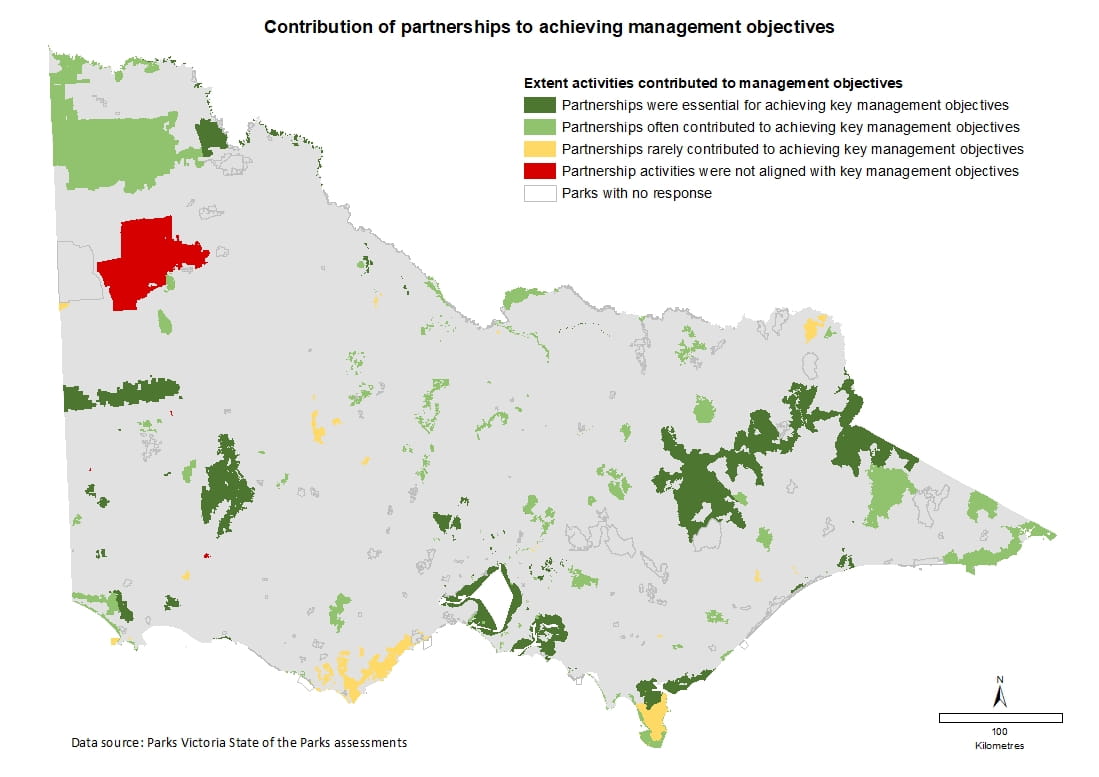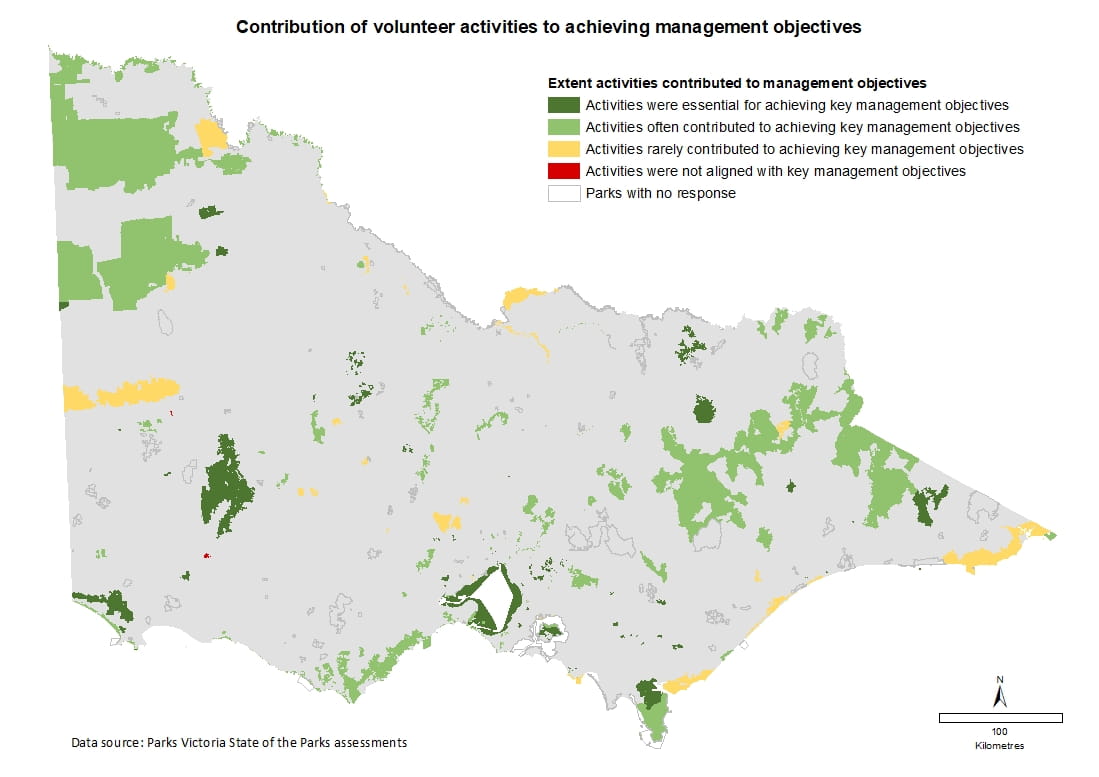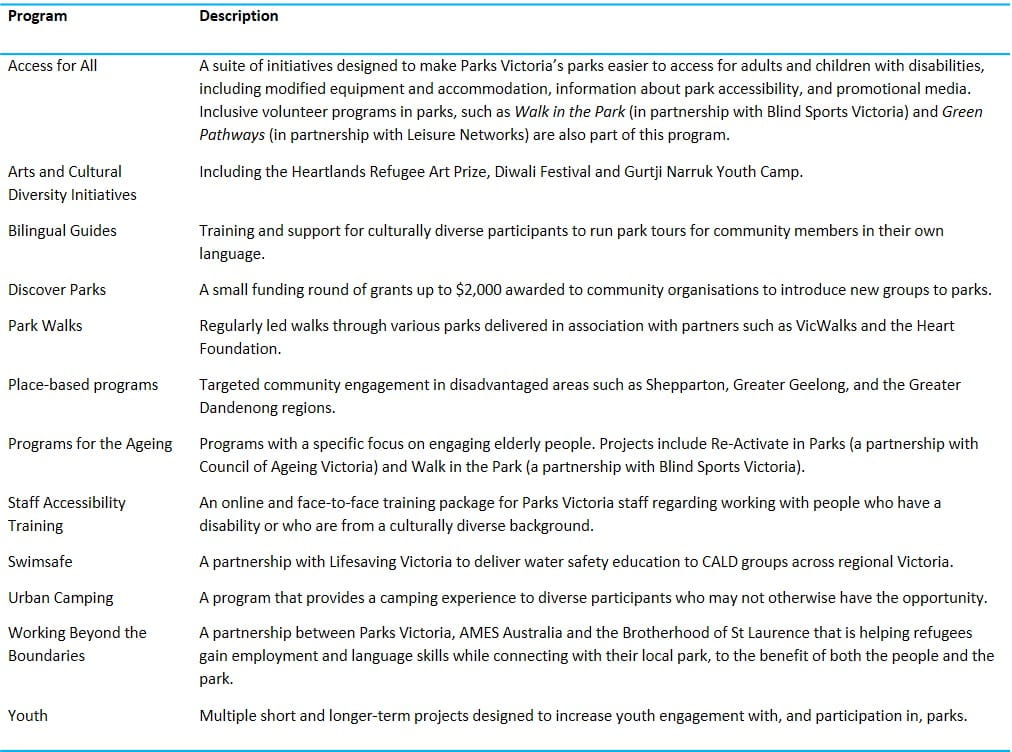Community engagement and volunteerism
State of the Parks Fourth Edition
Parks are significant community assets, and thus community engagement is an important process to enable awareness, involvement and a sense of belonging.
Volunteers contribute to park management through their involvement in hands-on activities such as tree planting, wildlife monitoring, conservation of heritage sites, maintenance of tracks and camp host programs. From these experiences, volunteers can gain great social, physical and mental benefits, and learn new skills. The Volunteering In Parks strategy is driving a modernisation of Parks Victoria’s volunteer approach and aims to deliver a world-class volunteering program. ParkConnect, an online interactive volunteer management system, is supporting a growth in volunteerism by connecting volunteers to hundreds of opportunities in Victoria’s parks.
Through Parks Victoria’s Healthy Parks Healthy People initiative there has been increased engagement with diverse communities across the state to enable better access to Victoria’s parks. Diverse communities include those from Culturally and Linguistically Diverse (CALD) backgrounds, persons with a disability, carers, young people and older people. Parks Victoria’s Disability Action Plan articulates its commitment to creating an inclusive experience for all park visitors. Park managers work with a range of partners to develop and sustain programs offering opportunities for communities to engage with parks.
Indicators
Level of volunteer participation
Effectiveness of volunteer and partnership programs
Number, diversity and participation in community engagement programs
Data confidence
Level of volunteer participation
Parks Victoria engages with a large network of committed volunteers including individuals and partner organisations working across parks, covering a wide range of activities. Volunteers are increasingly active in enhancing Victoria’s parks and waterways.
- During the reporting period the number of hours volunteers contributed to parks per year increased from 219,000 to 281,776 hours in 2017-18. Although outside the formal reporting period, this has increased further to over 300,000 hours in 2018-19.
- The number of hours volunteers contributed to parks was boosted by the introduction of the first bespoke on-line volunteer management system for a state-based park agency, ParkConnect, with 1500 new volunteer registrations.
- The largest proportion of volunteer activities are focussed on habitat restoration followed by environmental research, historic heritage conservation and then gardening.
- Friends, community and recreational user groups continue to be the largest contributor of volunteer hours.
Data source: Parks Victoria ParkConnect and Community Engagement and Inclusion team
Effectiveness of volunteer and partnership programs
- Park managers reported that partnership activities were essential for achieving management objectives in over one third of relevant parks.
- Volunteer activities were similar, with over 80 per cent of parks reporting that volunteer activities were essential or often contributed to achieving objectives.
- Although some park managers reported that volunteer activities and partnerships did not or only rarely contributed to achieving objectives, these may still be of benefit.

*Calculated from parks that were assessed in both 2013 and 2018 (Partnership activities, n = 92; Volunteer activities, n = 138)
Data source: Parks Victoria State of the Parks assessments

 [MAP
[MAP
Number, diversity and participation in community engagement programs
Programs to engage under-represented community groups in parks

Data source: Parks Victoria
Data confidence
Confidence in park manager assessments for contribution of partnerships and volunteers in achieving key management objectives.

Go to next section of State of the Parks Fourth Edition: Fire and emergency management

